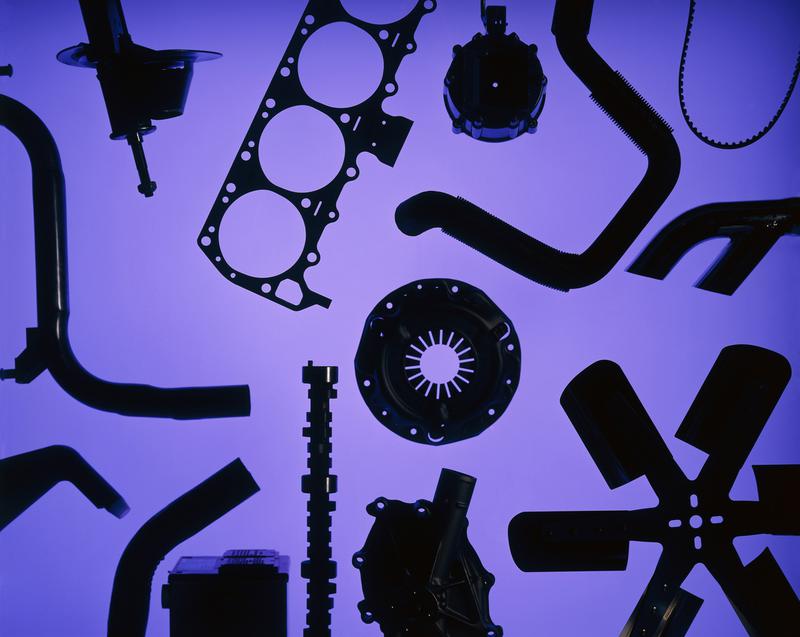Hall Effect Sensor Testing
commonly used for the cam and crank sensor but can also be found
in other places as well. Such as a speed sensor or revolution counter
on some compressors. Basically a Hall Effect sensor is a transducer
capable of a variable output based on the strength of the magnetic
field it comes in close proximity to. There are three leads
attached to the Hall Effect sensor. A ground lead, an input voltage
lead, and an output signal lead. (The ground lead can be omitted for
a case ground instead of a wire.)
What is a Hall Effect sensor?
The Hall Effect sensor can’t create a varied output signal by itself it needs a piece of metal to be placed at a precise distance from the tip of the sensor. This will create a fluctuating electrical signal to be induced as the metal is moved in and out of the magnetic field. This electrical signal is then transmitted out of the sensor on the output signal lead.
The Hall Effect sensor uses a reference voltage applied to the input lead as a base voltage for the output signal. The ground is merely there to complete the circuit. However, the reference voltage is usually 5 volts but that varies on some models to 8 volts or to as high as 12 volts (or battery voltage). This input voltage or commonly referred to as the reference voltage usually comes from the PCM.
The output wire is generally referred to as the signal output or in some reference material it may even be called the PCM input signal. Just keep in mind that it is an output from the sensor and not the place to be adding voltage of any sort while testing.
Most of the time you’ll find a crank sensor mounted near the crank shaft or on the flywheel with the tip of the sensor just a fraction of an inch away from a saw toothed wheel called a reluctor. The reluctor's saw teeth offer a high and low resistance to the sensors internal coil. If you took the reluctor and straighten it out in a straight line you would see that the up and down square outline it creates is exactly the same square wave form you will see on your oscilloscope. On a cam sensor it may not have a symmetrical saw tooth pattern but a repeatable up and down configuration with varied long and short saw tooth length patterns.
Testing a Hall Effect Sensor
There are a few ways to check a Hall Effect sensor that comes to mind. The first and most often gotten wrong test is to hold the sensor in your hand while it is hooked up to an ohm meter, then brush a metal object such as a wrench over the sensor. You should see some movement in the meter. Now this is not an absolute-for-sure test that indicates the sensor is in good condition. Although it does show whether or not the sensor can register a signal this is not a good/bad test result. You’ll need to test it further to be sure.
Without removing the sensor from the vehicle the next best method is to use a scanner. Most scanners that are capable of reading a cam or crank sensor will generally allow you to see the values of the sensor in real time. Some read as a revolution count, some read by way of an output voltage (PCM input from the sensor) while some can only show you the input voltage or percentage of output signal. (On some scanners, the wheel speed sensor signal will be converted to mph rather than a voltage reading.)
My preferred method is to utilize a scope. Start by connecting the scope ground lead to a known good ground, then back probe one of the leads of the sensor connection. (At this point it's not necessary to know which lead is which, we'll find that out in a minute.) A reading of “0” or close to 0 voltage would most likely indicate the sensor ground lead. If the lead shows close to 5 volts or more it’s more than likely the input reference voltage lead. Both of these leads can be read with a multi meter if a scope isn’t available. However, the remaining lead won’t register on a multi meter accurately with the engine running or in the case of a speed sensor with the wheel turning, that takes a scope. This is the lead that will produce the square wave pattern as I mentioned earlier.
The final check is to find the wiring diagram for the vehicle you’re working on and verify the different wire locations on the connector and their functions. Once you have determined the leads are correct the voltage readings you are seeing on the scope should help you in determining the condition of the sensor. To go even deeper into the diagnostics, and if your scope has more than one channel on it, you can use the next channel to see the cam and crank sensor on the same screen at the same time. Watching the positions of the highs and low values on the screen, you'll be able to work out the actual position of the piston (crankshaft) and the cam in relation to the peaks and valleys of the two sensors.
Testing using the Hall Effect sensor readings
With practice you’ll be able to read the scope screen like a road map. I’m not the fastest learner by any means, but I’ve managed to understand enough about the scope wave forms and the cam and crank sensor patterns to be able to spot a lot of problems that could have taken me hours to sort out without it, and there’s no reason why you couldn’t do the same.
